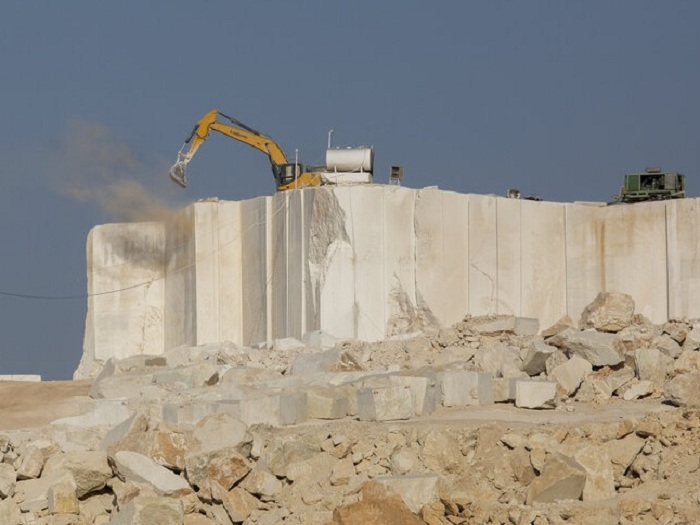Zanjan is the sixth mineral province of Iran

Secretary of the Mining Commission of Zanjan Chamber of Commerce, Industries, Mines and Agriculture: Zanjan is one of the mining provinces of the country and ranks sixth in the country in terms of the number of mines. Currently, out of three hundred and thirty-three active mines in this province, there are eighty metal mines and two hundred and fifty-three non-metallic mines.
According to the International Iranian Stone Exhibition, Reza Keshavarzi stated in a specialized meeting of miners and mining activists in the province with the representative of Zanjan and Tarom people and a member of the Industries and Mines Commission of the Islamic Consultative Assembly: The nominal capacity of the province's mines is 11 million nine hundred and annual Twenty thousand tons of minerals and three thousand people are directly employed in the mining sector of the province.
The Secretary of the Mining Commission of the Chamber of Commerce, Industries, Mines and Agriculture of Zanjan Province pointed out: "Several cases affect the inactivity of the province's mines, while mines can be a very good alternative to oil in the country."
Referring to the problems in the development of mining, exploration and mining in Zanjan province, Keshavarzi added: "Among these cases, we can mention the vegetation in the northwestern provinces of the country, including Zanjan, which has a legal decree and problems for It has established mining in this province.
He said: "Some vegetation, including astragalus, are among the forbidden species." Despite the law, much of the province's mining has been stopped.
Mining problems
The Secretary of the Mining Commission of the Chamber of Commerce, Industries, Mines and Agriculture of Zanjan Province stated that the activity of mines in Zanjan is facing three major problems: these problems include inquiries into natural resources and the environment, the need of the mining and mining industries for modern technologies and Export minerals and complete the production chain.
Agriculture pointed out: One hundred and fifty-six cases of mine exploration inquiries were made in June this year, which were answered positively by natural resources for less than ten percent of these inquiries, while exploration is the basis of mining and with this process, mining activity The province is facing closure.
The Secretary of the Mining Commission of the Chamber of Commerce, Industries, Mines and Agriculture of Zanjan Province, emphasizing that miners seek prosperity and never prioritize destruction, said: It can be left to the miners to create part of the infrastructure in the mining areas. But it is not fair to put all that on the shoulders of the activists in this part of the province.
Use the experience of other provinces
The head of the Mining Commission and a member of the Board of Representatives of the Chamber of Commerce, Industries, Mines and Agriculture of Zanjan Province also said: "Planting and moving species is possible and provinces like Urmia have good experiences in this field."
Valiullah Mansouri stated: Another problem of mining in the province is the issue of machinery that has been delegated to the provinces, but in Zanjan province this issue has not been worked on well.
Chairman of the Mining Commission and member of the Board of Representatives of Zanjan Chamber of Commerce, Industries, Mines and Agriculture, emphasizing that the decision behind closed doors has never worked and most countries seek advice from the private sector, noted: Banks do not cooperate in providing facilities with licenses Exploitation as a guarantee is also one of the mining problems of the province. Mansoori added: The next problem of mining in Zanjan province is the stop of machinery in customs.
Zanjan's good share of the mine
Another member of the Board of Representatives of the Chamber of Commerce, Industries, Mines and Agriculture of Zanjan Province also said: Zanjan Province has a good share of the country's mines and seventy percent of the province's exports are formed by non-ferrous metal industries.
Mehdi Rang Rona, stating that the mines need to import raw materials to survive, said: soil quota is low; As a result, miners are looking to import it from abroad.
The role of scholars
The representative of the people of Zanjan and Tarom in the Islamic Consultative Assembly also said: there are two billion dollars of imports in the mining sector, fifty percent of which are related to machinery.
Mustafa Taheri said: "Most of the imports, which is about one billion dollars, belong to non-machinery, which can be solved by replacing knowledge-based companies."
The representative of the people of Zanjan and Tarom in the Islamic Consultative Assembly, stating that replacing mines with oil in the country is a good thing, but it is not beautiful for us to sell raw materials, clarified: we should look for industries and investments that consume little energy.
Taheri, stating that our GDP is ten times higher than energy consumption, said: The Islamic Consultative Assembly has seriously entered into the discussion of knowledge-based and a faction has been formed in this regard, but the position of mines can not be ignored.
Development of downstream industries
The representative of the people of Zanjan and Tarom in the Islamic Consultative Assembly added: the downstream mining industries should be developed and raw materials should be avoided by creating added value so that the production cycles are completed.
He emphasized: in the field of mining, problems such as local opposition should be solved by the trustees and related institutions, but the resources and interests of the villages should also be considered. It is worth mentioning that a number of mining activists in Zanjan province expressed their problems in this meeting, including the establishment of a special court in the field of local opposition, problems related to machinery, problems related to interactions with the environment and interactions with natural resources and problems related to Astragalus vegetation noted.










